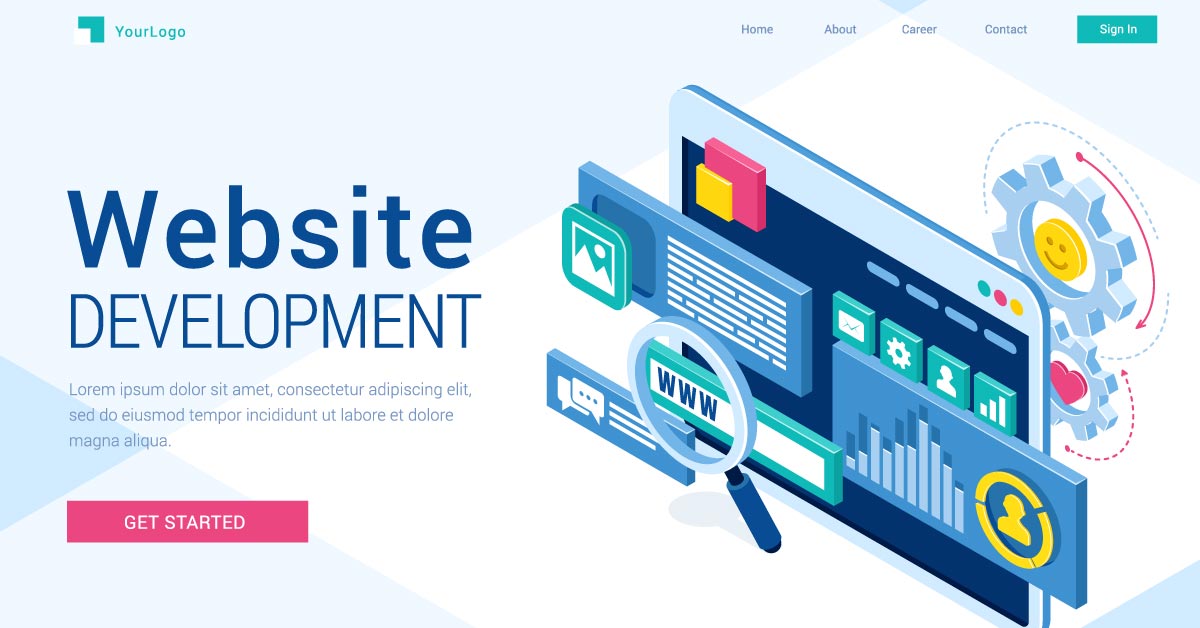
What Is A Landing Page? And Quick Tips For Building A Good One
A website landing page is a single web page that is intended to be the first point of contact for website visitors. It is often designed for a specific marketing or advertising campaign with the objective of directing people to take a specific action, like purchasing a product, filling out a form, or signing up for a service.
In digital marketing, landing pages are frequently used to improve the success of online advertising campaigns. They are intended to be laser-focused and suited to a certain audience or objective, with few distractions and a clear call-to-action (CTA).
A landing page can be reached via several channels, such as search engines, social media, email marketing, and display advertising. When a user clicks on a link or advertisement, they are led to a landing page that has been customised to increase the possibility of a conversion or desired action.
What happens to a visitor once they reach your landing page after clicking on a link is crucial. You could have the most effective advertisements, content, and keywords in the world, but if the design and layout of your landing page aren’t right, your campaigns will fail to meet their full potential.
In this article, I’ll cover some of the most important aspects of creating a successful landing page. These tips can help you improve your landing pages and get the most out of them for lead generation, product promotion, and sales. Let’s dive in right now!
Tip #1: There must be congruity between your ads and your landing page
When a visitor clicks on an ad, they have a specific expectation of what they will find on the landing page. If the landing page does not meet that expectation, visitors are likely to click on the back button, and you’ll lose a potential conversion.
To ensure congruity, make sure your ads and landing pages use the same language, visual style, and messaging. If your ad promises a particular benefit or feature, make sure your landing page delivers on that promise. By keeping your ads and landing pages consistent, you can build trust with visitors and increase the likelihood of conversions.
Tip #2: Page load time
Visitors today have high expectations for website speed and performance, and if your landing page takes too long to load, they are likely to abandon it and look for another option. This is particularly important if someone’s, for example, searching on their phone with a slower 3G or 4G connection.
To optimize your landing page’s load time, start by optimizing your images and reducing the number of HTTP requests. You can also use a content delivery network (CDN) to speed up page load times and improve performance. Finally, make sure your landing page is hosted on a reliable, fast web hosting service.
Tip #3: Give people what they want
This means understanding your audience and their needs and creating a landing page that speaks directly to those needs. Don’t make your visitors scroll through a whole long landing page with lots of information they may or may not care about; just make it very easy for them to take the next action that you want them to take.
To do this, start by understanding the pain points and motivations of your target audience. What problems do they have that your product or service can solve? What benefits are they looking for? Once you have a clear understanding of these factors, you can craft a landing page that speaks directly to those needs, using persuasive copy, visuals, and messaging that resonates with your target audience.
Tip #4: Simplify where possible
The more cluttered and complex your landing page is, the harder it will be for visitors to understand your offer and take action.
To simplify your landing page, focus on the essentials. Use a clean, uncluttered design with plenty of white space, and limit the number of distractions and competing calls to action. Make sure your messaging is clear and concise, and use bullet points and subheadings to break up the text and make it easier to read.
Tip #5: Lead with the offer
This means putting your offer front and centre, and making it clear what visitors will get if they take the desired action.
To lead with the offer, use a clear, attention-grabbing headline that highlights the benefits of your offer. Use visuals and other elements to reinforce the offer, and make sure the call to action (CTA) is prominently displayed and easy to find.
Tip #6: Add credibility
Visitors want to know that they can trust you and that your offer is legitimate.
Use social proof like testimonials, case studies, qualifications, and reviews from happy customers to make your business seem more trustworthy. Include trust badges and certifications, and make sure your landing page design looks professional and polished. It can really help, particularly if you’re not a well-known brand, to add some sort of credibility into the landing page.
Tip #7: Be specific
Finally, when creating effective landing pages, it’s important to be specific. This means being clear and specific about your offer, the benefits it provides, and the action you want visitors to take.
To be specific, use concrete language and specific numbers and statistics to support your claims.
